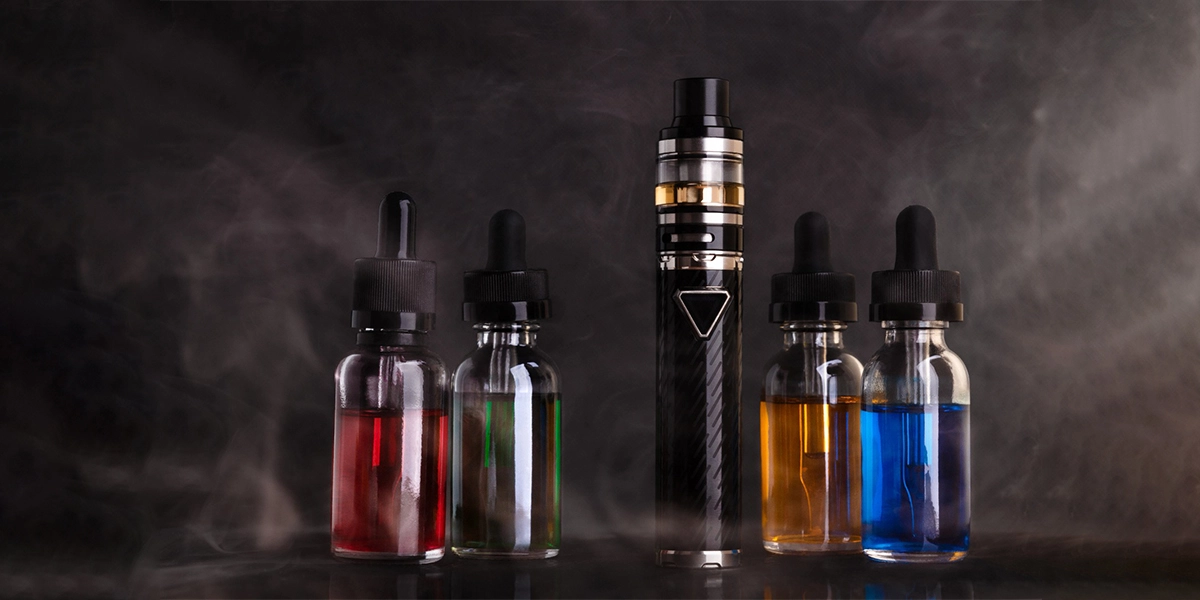No products in the cart.
Is Vaping Harmful? Understanding the Risks and Impact

Over time, the use of vapes has become popular among several populations, such as young adults and teenagers. Vaping has been promoted as a safer choice than smoking typical cigarettes. However, the increase in popularity of vaping has sparked fear of its dangers to health and long-term side effects. Vaping, though appears relatively healthier, the question still arises is vaping bad for health?
This blog will discuss why is vaping harmful and how it can affect your health. So, this detailed article is a guide for decision-making, and I hope you will make wise decisions about vaping in the future.
What is Vaping?
The act of vaping means the exhalation of smoke resulting from the inhalation of vapor from an electronic cigarette (e-cigarette) or any similar device. E-cigarettes work by vaporizing a liquid, if you will, often called e-liquid vape juice or simply e-juice, which would normally have nicotine, flavoring, and other ingredients. Unlike conventional cigarettes, when one is vaping instruments, they don’t burn tobacco, which most of the time is the main reason for injury while smoking.
Since there is no tobacco and consequently no combustion, then many are inclined to think that vaping is less harmful. Even though this might be the case, it needs to be noted that the absence of tar and toxicity present in a cigarette does not imply that vaping is risk free.
Health Risks of Vaping
As much as this has been presented as the primary advantage of vaporizers, studies have proven otherwise, indicating that vaporizers also pose health risks. There are many risks that come with some of these risks, for example, include;
Nicotine Addiction
The other typical active ingredient in most vape and e-liquids is known as nicotine. Over the years, the general public has come to appreciate the dangers posed by smoking tobacco and nag chorusing dominated substance E partially because puberty, younger brain metabolism is largely known to devote this nicotine exposure and over this more heart, which means that there are up.
Although vaping devices help manage the amount of nicotine consumed during vaping, there are people who do not know how to calculate nicotine absorption and therefore take more nicotine than they would have with cigarettes, increasing their dependence.
Lung Damage
Marginalizing the harmful effects of vaping is lung illness. Vaping poses a significant risk to the lungs as inhalation of vaporized chemicals, and more so any flavoring used in e-liquors, has been associated with lung diseases. In the United States, a surge of lung diseases classified as EVALI (e-cigarette or vaping-related lung injury) occurred in the year 2019. Reports worth citing came from the CDC indicating that this resulted in a number of fatalities and a series of young adult hospitalizations.
Even as no one could explain the rationale for the eruption of EVALI, the presence of vitamin E acetate found in certain vape liquid containers was pointed out. Despite the fact that this agent is not present in all vape liquids, other hazardous substances cause lung irritation and inflammation and therefore have the capacity to merit long-term repercussion on the lungs.
Chemical Exposure
Aside from nicotine, a component making all e-liquids vivid contributes like diacetyl, which is a flavoring agent associated with developing a disease called ‘popcorn lungs’ are harmful too. This condition causes thickening and scarring of the lung’s small air ducts, which induces a number of symptoms such as coughing, wheezing, or trouble breathing.
Besides this, some studies have shown that certain e-cigarette devices may release other pollutants around 300 degrees in terms of toxicity, including formaldehyde, acetaldehyde, and metals. Such agents, if exposed, continuously increase the risk of cancer and chronic diseases.
Cardiovascular Impact
Every day it is more clear that vaping is not healthy for cardiovascular health. The students said that heart attack risk is increased in people who puff compared to non vapers. Puffing increases heart rate and blood pressure, which causes heart attack, stroke, and other complications.
Vaping Myths
Vaping always runs amidst several myths, most of which form the very reason for its widespread usage. Here are some of them:
1. Vaping is Completely Safe
While vaping can be less dangerous than regular smoking, it is not without risk. In Vapes Direct Nicotine and other chemicals in vape products can threaten health in both the near and long term. To say that vaping is “completely safe” is belittling the growing research identifying a pathway to addiction, lung damage, and other health complications.
2. Vaping Helps You Quit Smoking
Vaping has also been used by many smokers as a way of quitting the practice. However, how far vaping actually helps in quitting the addiction to smoking itself is still in debate. While some studies have shown the efficiency regarding vaping in cutting down smoking, others have indicated that most users become dual users-that is, those who use both cigarettes and e-cigarettes-which maintains nicotine dependence and could increase it.
For those who want to quit smoking, well-known quitting products, such as nicotine patches and gum, and professional programs generally tend to be more effective than vaping.
3. Nicotine-free vaping is Harmless
Nicotine-free e-liquids may seem less harmful, but they do come with very real risks. Flavoring agents and solvents, among a host of other chemicals, will be included in such products and can, when inhaled, have negative effects on human health. Studies have documented that even without nicotine, vaping can evoke inflammation and oxidative stress in the lungs and hence create a pathway for respiratory diseases.
The Effects of Vaping on Young People
Some of the more disturbing newer trends include the increasing rates of vaping among teens and young adults. The CDC estimated that over 3.6 million middle and high school students in the United States were using e-cigarettes in 2020. Aggressive marketing, appealing flavors, and perceptions of safety relative to cigarettes have contributed to this rise in popularity.
However, the long-term effects are the most distressing consequence of vaping among teens. Vaping adolescents are most likely to progress to regular cigarette use. Besides, exposure to nicotine during adolescence has particularly harsh effects on brain development, which may result in lifetime cognitive and behavioral damage.
Explore : What Are the Benefits of Using a Water-Based Vape?
Conclusion
Whether or not vaping is harmful can well be answered in the affirmative. Vaping is much less hazardous than smoking regular cigarettes, but that does not make it harmless as one may become addicted to nicotine and some of the chemicals, whose fumes could lead to irreparable damage to the lungs.








